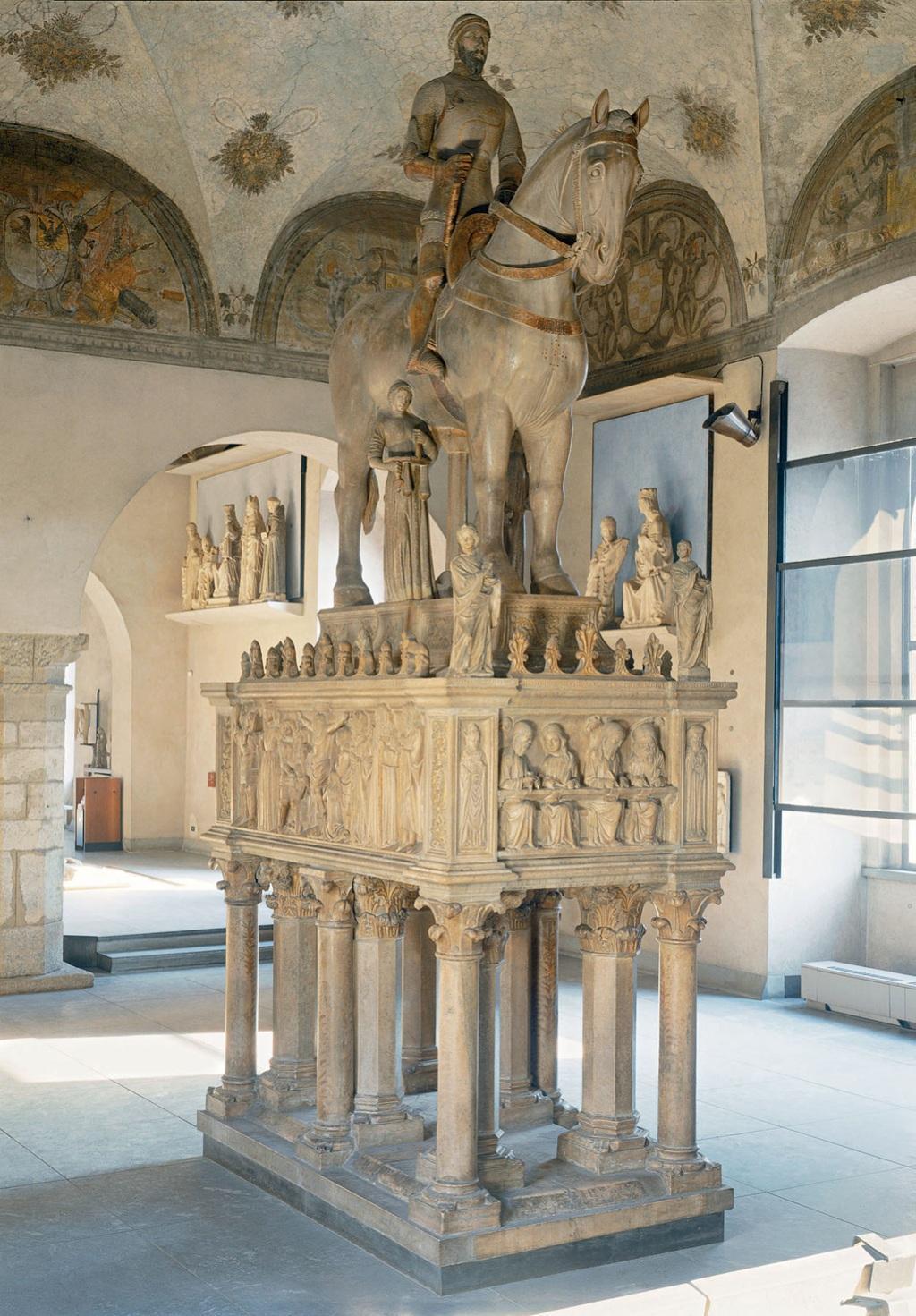Lombardy : Equestrian Tomb of Bernabò Visconti
Bernabò Visconti was born into the ruling family of Milan and commissioned his own tomb monument from Bonino da Campione before 1363. The marble statue was originally painted gold and silver and located at the high altar of the palace church, San Giovanni in Conca in Milan. The man and rider are on top of the sarcophagus and the whole structure is supported on a pedestal by twelve carved columns. The columns show scenes of protection, intercession, and salvation, themes repeated throughout the body of the work. Visconti’s armor is elaborately carved, with details of steel mesh and leather reinforcements. His chest bears the Visconti emblem, a horned, scaly, jagged-toothed dragon with a half-eaten human in its mouth, done in red stone inlay. Bernabò Visconti is triumphant atop horseback, a long representational tradition of men on horseback to imply power, authority, and dominance.
Directly under the horse and rider sits the Four Evangelists with Saint Gregory the Great and Saint Jerome. On the back side of the monument, a scene shows the coronation of the Virgin surrounded by four angels playing music, Saint Ambrose and Saint Augustine. The longer side panels depict more complex scenes, including the crucifixion of Christ and Christ as the Man of Sorrows. In its original position at the altarpiece, the panel to Visconti’s right showing the crucifixion faced the congregation, while the other side was viewed by the choir. Many of the saints and other figures depicted are associated with the Visconti family or patrons of Milan. A few others are healers or defenders of the plague or healers. When the Black Death swept through Milan in 1361 and 1373, it encouraged worship, so the symbols of protection were particularly powerful and the tomb was prominently placed to provide a message of salvation and hope in the face of disease.

